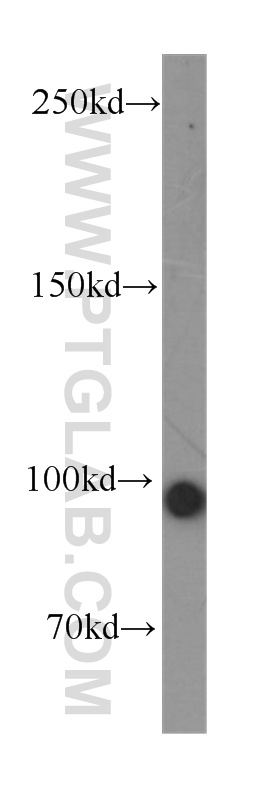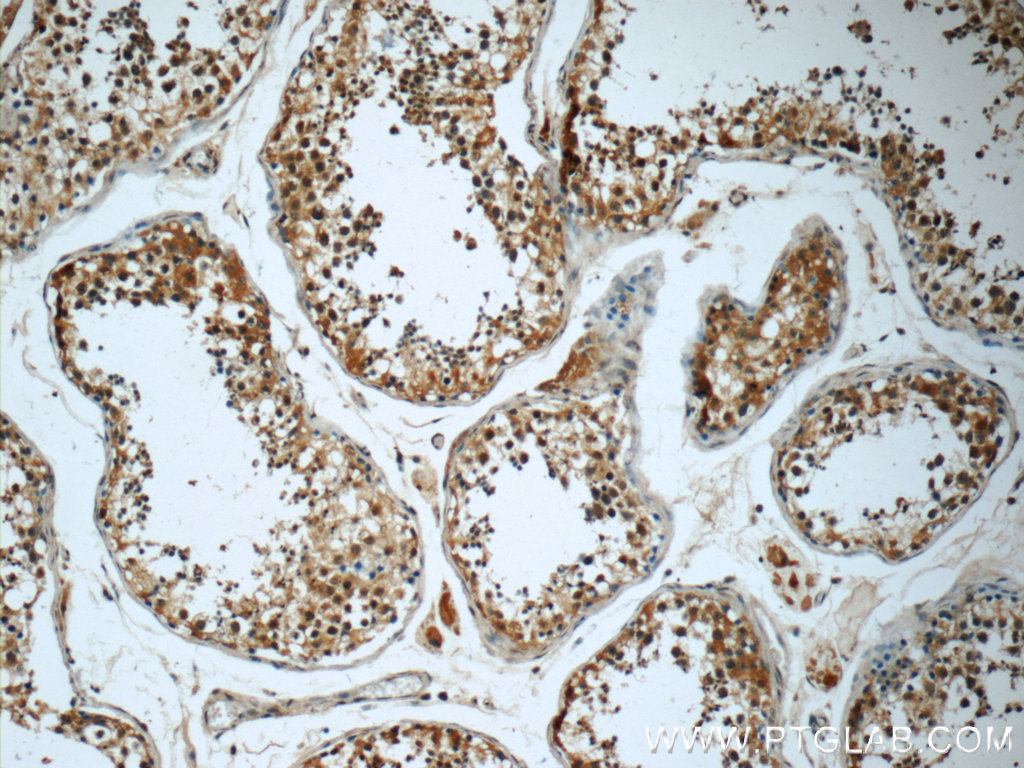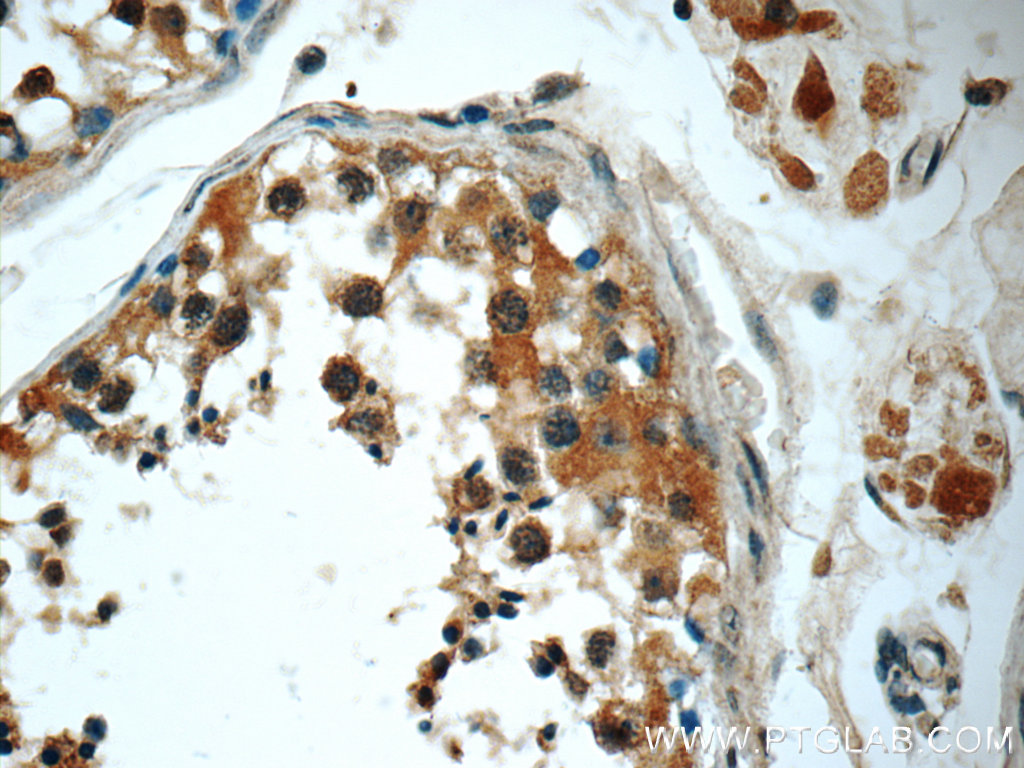验证数据展示
经过测试的应用
| Positive WB detected in | human testis tissue |
| Positive IHC detected in | human testis tissue Note: suggested antigen retrieval with TE buffer pH 9.0; (*) Alternatively, antigen retrieval may be performed with citrate buffer pH 6.0 |
推荐稀释比
| 应用 | 推荐稀释比 |
|---|---|
| Western Blot (WB) | WB : 1:500-1:2000 |
| Immunohistochemistry (IHC) | IHC : 1:20-1:200 |
| It is recommended that this reagent should be titrated in each testing system to obtain optimal results. | |
| Sample-dependent, Check data in validation data gallery. | |
产品信息
60266-1-Ig targets KIFAP3 in WB, IHC, ELISA applications and shows reactivity with human, mouse, rat samples.
| 经测试应用 | WB, IHC, ELISA Application Description |
| 经测试反应性 | human, mouse, rat |
| 免疫原 | KIFAP3 fusion protein Ag20809 种属同源性预测 |
| 宿主/亚型 | Mouse / IgG2a |
| 抗体类别 | Monoclonal |
| 产品类型 | Antibody |
| 全称 | kinesin-associated protein 3 |
| 别名 | KAP 3, KAP3, KIF3AP, KIFAP3, kinesin associated protein 3, SMAP, Smg GDS, Smg GDS associated protein |
| 计算分子量 | 792 aa, 91 kDa |
| 观测分子量 | 91-100 kDa |
| GenBank蛋白编号 | BC028679 |
| 基因名称 | KIFAP3 |
| Gene ID (NCBI) | 22920 |
| RRID | AB_2881387 |
| 偶联类型 | Unconjugated |
| 形式 | Liquid |
| 纯化方式 | Protein A purification |
| UNIPROT ID | Q92845 |
| 储存缓冲液 | PBS with 0.02% sodium azide and 50% glycerol , pH 7.3 |
| 储存条件 | Store at -20°C. Stable for one year after shipment. Aliquoting is unnecessary for -20oC storage. |
背景介绍
KIFAP3, also known as KIF3AP or KAP3, is a novel KIF3A/3B-associated protein. It binds to the tail domain of KIF3A/3B and may play a role in regulating the binding of KIF3A/3B to cargoes. Recently it has been reported that mutation within the KIFAP3 gene is associated with decreased KIFAP3 expression and increased survival in sporadic ALS, which makes it a potential target for ALS therapy. KIFAP3 has also been identified as the target of mir-130a.
实验方案
| Product Specific Protocols | |
|---|---|
| WB protocol for KIFAP3 antibody 60266-1-Ig | Download protocol |
| IHC protocol for KIFAP3 antibody 60266-1-Ig | Download protocol |
| Standard Protocols | |
|---|---|
| Click here to view our Standard Protocols |


